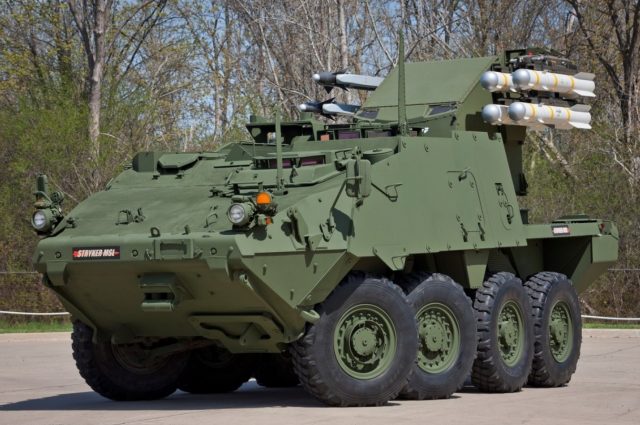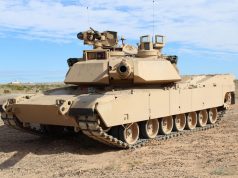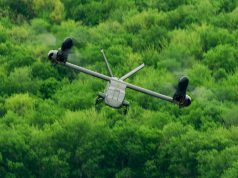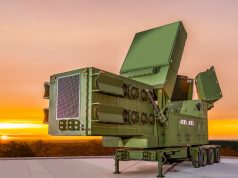US Army soldiers are putting first examples of the Initial Maneuver Short Range Air Defense (IM-SHORAD) air defense system to the test at the White Sands Missile Range.
The IM-SHORAD system is one of the Army’s solutions to replace the aging Avenger short range air defense system. While the Avenger worked well in its day as a Cold War platform for the protection of Army units from close in air threats, the system is showing its age, being less survivable than other modern air defense systems, and requiring a long set up time to get operational.
The IM-SHORAD is built to bring a modernized package of capabilities to the table and improve in the areas the Avenger struggles. Mounted on a Stryker armored vehicle, the system can keep up with the units they are protecting, with better armor and survivability than a HUMVEE platform provides. The system has its own radar, and an array of weapons that can be effective against air threats without a long setup process.
The Army has already awarded General Dynamics Land Systems (GDLS) a $1.2 billion contract to produce, test and deliver 144 of the systems.
At this time the IM-SHORAD system is not quite ready for full production, but multiple prototypes have been made. To get the system ready to be mass produced, operational testing is needed. Soldiers need to get their hands on the system, learn to use it, and then use it just as they would, including trying new things, making mistakes, and otherwise doing the sort of thing that the system designers may not have prepared for.
A US Army unit from Germany will be the first to receive the IM-SHORAD
Soldiers from the 5th Battalion, 4th Air Defense Artillery Regiment out of Ansbach, Germany are on White Sands Missile Range conduction training and operational testing of the system.
Bringing in a unit from Germany to just conduct operational testing may seem a little extreme, but for the long-term it’s an advantageous decision, the army explains. First, the unit is already equipped with the Avenger system the IM-SHORAD system is set to replace. This means that the soldiers giving their feedback and testing the system will have a solid base for comparison, making them perfect for not just evaluating the differences, but also giving them the ability to really test the system to the mission it’ll be expected to perform, and treat the system exactly how it will be treated by the end user.
Secondly, the 5-4 ADA is currently set to be the first unit to receive the IM-SHORAD system. By getting their hands on the system in advance, the unit is ensuring that when the finalized vehicle is delivered, there will already be a core cadre of soldiers that are fully trained on the system and familiar with its abilities, quirks, and unique features. This should make training up soldiers new to the system a little easier, as their peers can directly contribute to the training and provide nuance that can only be gotten in a Soldier-to-Soldier training environment.
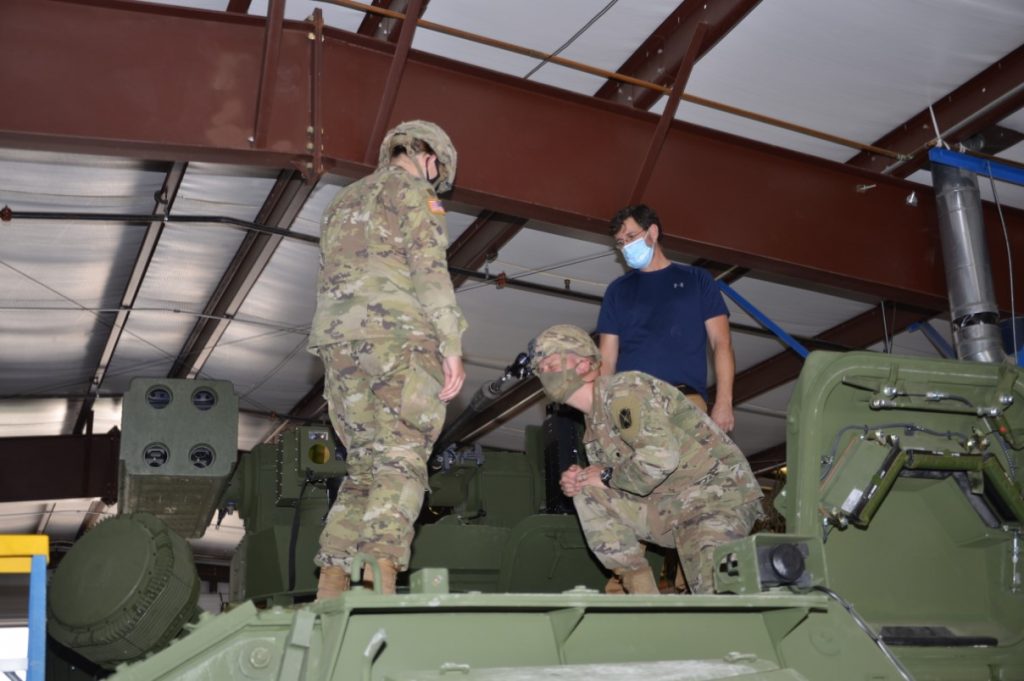
“The reason why this platoon is out here from Germany is we’ll be fielding the first system into the Army, so it not only gets us to test the system, but also understand how to use it so we can go back to our home unit and train with them on the system,” said 1st Lt. Ryan Pitcher, the units’ platoon leader.
The Army plans to spread a total of 144 systems throughout four battalions during the initial acquisition phase by the second quarter of fiscal year 2023.
IM-SHORAD incorporates a mission equipment package (MEP) from Leonardo DRS that will enable the vehicles to destroy, neutralize or deter low altitude aerial threats, including Group 3 UAS, rotary wing and fixed wing aircraft. The package includes Stinger and Hellfire missiles in addition to XM914 (30mm) and M240 (7.62mm) guns.

















